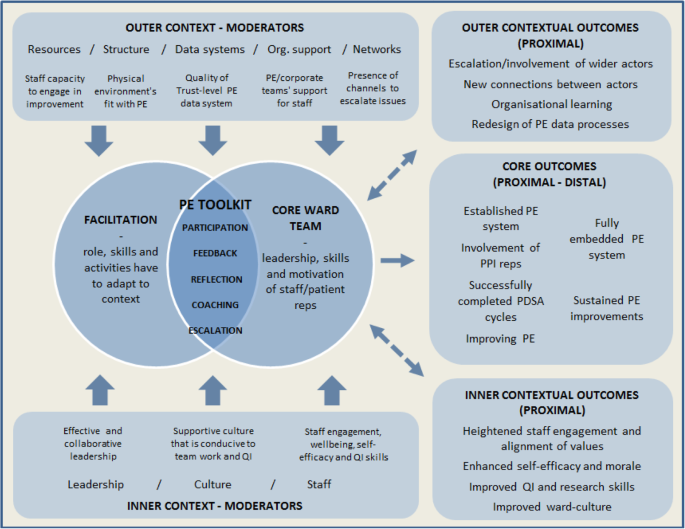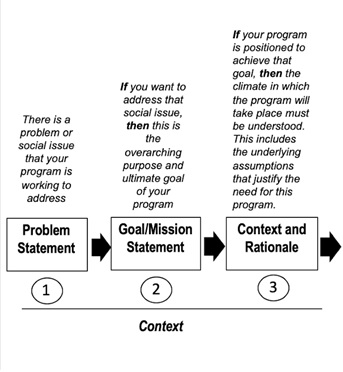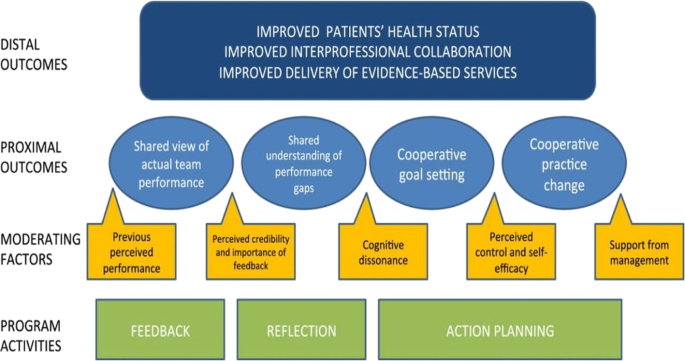Logic Models Inform Which Evaluation Question May Be Most Useful
Unrealistic expectations about how program outcomes will be achieved can be flagged by developing a logic model. Logic models also help to inform and educate stakeholders on project outcomes as well as particular project goals or approaches.

Using Logic Models And Theories Of Change Better In Evaluation Better Evaluation
Next you will develop and refine specific evaluation questions.

. Overall the logic model will serve as a guide for your evaluation plan design. Stay tuned for more information on Evaluation Plan Design in our next blog. The PRECEDE-PROCEED logic model can be used in program planning by identifying the underlying issues or risk factors affecting the oral health in adults with intellectual andor development disabilities IDD1 The PRECEDE part of the model Phases 1-4 helps in developing an appropriate strategy to address these issues2 These strategies or actions can be planned.
What Parts of Your Program Will Be Evaluated. May 5 2015. A clear logic model illustrates the purpose and content of your program and makes it easier to develop meaningful evaluation questions from a variety of program vantage points.
Kellogg Foundation offers a Handbook with detailed information that may be helpful to organizations without extensive evaluation experience as well as a Logic Model Development Guide. Logic Modeling Methods in Program Evaluations comprehensive approach. Logic Models and Evaluation Logic models typically provide a comprehensive description of three core aspects of a program or policy initiative project etc.
A logic model is a plan or road map for program development and delivery and is foundational for program evaluation as it provides a critical single document to ensure your program stays on course to achieve the identified outcomes. Logic models are sometimes referred to as road maps for the organization. In addition logic models used for evaluation include the measures that will be used to determine if activities were carried out as planned output measures and if the programs objectives have been met outcome measures.
Uses Limitations Links to Methodology and Data Jonathan A. An example of a basic logic model detailed in the development guide is included below. Benefits of Using Logic Modeling.
Many terms are used to describe these approaches including real time evaluations rapid feedback evaluation rapid evaluation methods rapid-cycle evaluation and rapid appraisal. If this occurs update the components of the logic model accordingly. At the state level for example a logic model can be used to plan how a new policy will be rolled out or how data from each program will be analyzed.
Why Use a Logic Model. Using the logic model that you created in step 2 you will decide on the general focus of your evaluation. Dylomo is a free web-based tool that can be used to create interactive online logic models.
Johns Newfoundland Labrador Canada in June 2016 and was demonstrated at the Australasian Evaluation Society conference in Perth Australia 2016. The model helps program staff gain a common understanding of how the program works and their responsibilities to make it work. A logic model is a relatively simple image that reflects how and why a program will work.
Reflecting on andor analyzing a program evaluation In program evaluations logic models rely on the tight link between. Because of its continued use throughout the life of the program a logic model should never be considered as static but. Its development involved a user-testing experience at the Canadian Evaluation Society conference in St.
Benefits of developing and using logic models are. A Rapid Evaluation is an approach that uses multiple evaluation methods and techniques to quickly and systematically collect data when time or resources are limited. Concrete things that are invested in the program these are the core aspects of a program that allow the program to actually be implemented eg.
Logic Models in Adult Education At the state and local program levels logic models can be useful in planning initiatives monitoring performance and data management and evaluating effectiveness. Logic models are also useful in developing questions to be addressed through evaluation and in identifying appropriate evaluation and data collection methods. The model helps communicate the program to people outside the program in a concise and compelling way.
As you work through your program implementation you may determine that changes need to be made along the way. Our expectations about a program as represented in a logic model provide a foundation for identifying pertinent performance measurement data with which to evaluate a programs effectiveness. Logic Models help outline resources and activities necessary to the goals of the program.
A logic model can be useful for different purposes in the life of a program for example. YOUR PROJECTS LOGIC MODEL THE QUESTIONS IT MAY GENERATE Refer to your projects logic model or if you dont have one think about key components of your project. A Beginners Guide A logic model is an organized and visual way to display your understanding of the relationships among the resources you have to operate your program the activities you plan and the changes or results you hope to achieve.
Using a logic model to. Logic models are useful to program administrators who are trying to implement changes in their program. Program goals Program Services Measurement plans Use a logic model to help generate the clarity and specificity required for success and often demanded by funders and constituents.
Use the checklist as you create evaluation questions step 3 in the CDC Framework. Written for students researchers consultants professionals and scholars Logic Modeling Methods in Program Evaluation provides a step-by-step explanation of logic modeling and its importance in connecting theory with implementation and outcomes in program evaluation in the social sciences. Context implementation and results which includes outputs outcomes and impact.
People with different interests and perspectives can create a logic model together to envision and agree on what a program might look like and what it might accomplish. This checklist can be used either as a communication tool to aid in developing the specific. Logic Models visually present program information and the progress towards core goals.
A logic model is the perfect place to think about evaluation of your project. Logic models are a useful tool for program development and evaluation planning for several reasons. Creating logic models in a group brings the power of consensus and group examination of values and beliefs about change processes and program results.

Advancing Complexity Science In Healthcare Research The Logic Of Logic Models Springerlink

Program Creation Mapping Articulating Program Theory Jmu

What Are The Components Of A Logic Model Strategic Partnerships

Logic Models Prompt Hard Thinking About How To Achieve Results In Education
52 Weeks Of Betterevaluation Week 3 Q A About Drawing Logic Models Better Evaluation

Enhancing Program Performance With Logic Models Better Evaluation

Information Campaign Theory Of Change Program Evaluation
52 Weeks Of Betterevaluation Week 3 Q A About Drawing Logic Models Better Evaluation

52 Weeks Of Betterevaluation Week 3 Q A About Drawing Logic Models Better Evaluation

Designing A Logic Model Youtube

Using Logic Models And Theories Of Change Better In Evaluation Better Evaluation

Step 2 Clarify Program Logic Meera

Advancing Complexity Science In Healthcare Research The Logic Of Logic Models Springerlink


Comments
Post a Comment